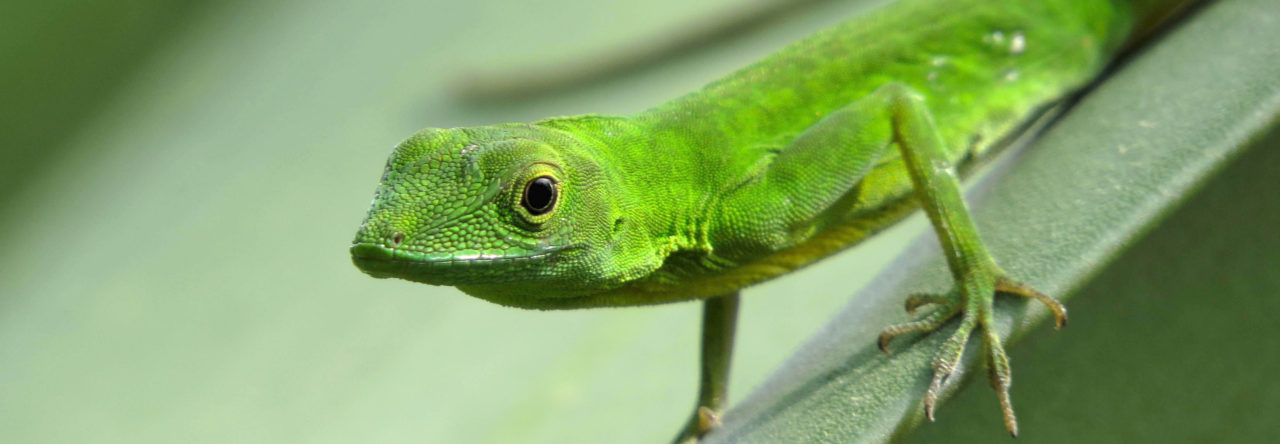I’ve completed the brief survey of the distribution of A. cristatellus in Costa Rica (see previous post for explanation). The work was hampered by rainy and cool weather. Nonetheless, several new localities were identified. In particular, we found cristatellus in Bribri, very close to the Panamanian border. We actually went to the border town of Sixaolo, and even walked across the bridge, setting foot in Panama for a full 90 seconds (border officials apparently routinely allow tourists across the border to take a photo). However, by that time, the weather was very overcast and cool, and no lizards were out. Were I a betting man, I’d wager that cristatellus is already in the land of the canal.
Heading westward from the port town of Limon (into which we did not set foot, as no one seems to have a nice word to say about the place), we re-traced our steps to Turrialba, where we confirmed their presence on the outward bound leg of the trip. I had hoped to see how much further westward it had spread (or upward in elevation, specifically to the nearby town of Cartago), but the weather today (I write from Turrialba) is rainy and overcast, not good cristatellus weather, particularly at elevation. So, we will have to leave it to someone else to further chronicle this point.
Finally, we also located cristatellus in Siquerres, but not, to my surprise, at Guapiles. The weather was turning by the time we got to Guapiles, which is several hundred meters higher in elevation, at ca. 300 m according to my unreliable car GPS, but we did look intensively. Nonetheless, it’s presence in Siquerres suggests that it could continue spreading at lower elevations to the north and west.
Bottom line: the expansion to Turrialba may be a dead-end, as this area is ringed by high mountains. However, it is possible that cristatellus could spread around the north at lower elevations. Certainly, if it can get to Guapiles, it could just keep on going. Even without that jumping off point, it might spread at lower elevations to the vicinity of Tortuguero and, who knows, to the outskirts of OTS’ La Selva Biological Station. Who knows? Maybe it’s there already. A lot depends on how it is spreading: by foot, or by car?
One last note: we didn’t have time to look thoroughly, but it was most commonly found in towns or cities, not at roadside open areas or in the few forested areas we examined.
An interesting situation.
- Third Mexican Amber Anolis Lizard Discovered - January 14, 2025
- Anolis Lizard Research Paves the Way for Advances in Treatment of Human Prostate Cancer - January 10, 2025
- When Two Lizards Meet for the First Time, Scientists Witness Evolution in Action - January 3, 2025



rglor
Has anybody reported on interactions between A. cristatellus and the native species?
Jonathan Losos
No. Would make an interesting study.